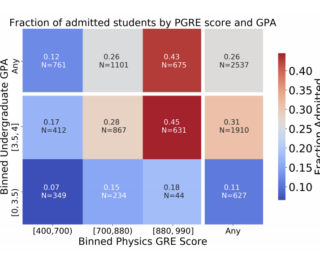
by Guest | Apr 29, 2023 | Crossposts, Daily Paper Summaries
Title: Spectral Diversity of Rocks and Soils in Mastcam Observations Along the Curiosity Rover’s Traverse in Gale Crater, MarsAuthors: Melissa S. Rice, Christina Seeger, Jim Bell, et al.First Author’s Institution: Department of Geology, Western Washington University, Bellingham, WA, USStatus: Published in Journal of Geophysical Research: Planets [Open Access] This bite is cross-posted from our geology sister site, Geobites. The original post from February 9, 2023 can be found here. Emma HarrisI am a PhD researcher at the Natural History Museum and Imperial College London studying the geology of Mars from orbital imagery with a focus on Mars rover landing sites. In my spare time I like netball, horse riding, and listening to too much Taylor Swift. On the 28th January 2023 NASA’s MSL Curiosity rover team confirmed the rock ‘Cacao’ as an iron-nickle (Fe-Ni) meteorite on the surface of Mars. Curiosity captured images of a silvery-grey rock, very distinctive among the beige-red sedimentary landscape it is currently exploring. Cacao is a ‘float’ rock, meaning is it not embedded within the bedrock and is not where it formed. Float rocks are common on Mars, but many can be traced back to the upper ledges of slopes they have fallen from, or as ejecta from a nearby impact. Cacao has joined a special group of float rocks that are distinct in appearance, genetic composition, and origin.The MSL Curiosity team imaged and analysed the meteorite using MastCam cameras and ChemCam lasers in order to study the composition of the space rock. Although these particular results have not yet been published, similar Fe-Ni meteorites have been identified on the surface of Mars by...

by Wei Vivyan Yan | May 21, 2021 | Book Reviews, Crossposts, Daily Paper Summaries
The exploration of the universe across 2000 years in the oriental land of ancient China

by Briley Lewis | Nov 27, 2020 | Crossposts, Current Events, Daily Paper Summaries
Some people claim the Physics GRE helps students “stand out” in admissions. Today’s paper says there’s no evidence for that, yet another reason why we should get rid of the GREs in admissions! #GRExit

by Guest | Feb 21, 2020 | Crossposts, Daily Paper Summaries, Guides, Teaching
Do common curricula used in physics classrooms follow the principles of Universal Design? Today’s article, written by Nick Young of PERbites, details the findings of just such an investigation and reports possible modifications to improve accessibility of physics education.

by Briley Lewis | Nov 15, 2019 | Crossposts, Daily Paper Summaries, Guides, Teaching
TAs are important in student learning, so how can we better prepare TAs to teach? This is the first post in a collaboration between PERbites and Astrobites on science education.

by Joanna Ramasawmy | Jul 29, 2019 | Crossposts, Daily Paper Summaries
Interplanetary collisions can explain a number of phenomena in our own solar system — here’s evidence of such a crash shaping the formation of two distant planets. Translate from an Astrobitos bite by Elena Gonzales Egea.







